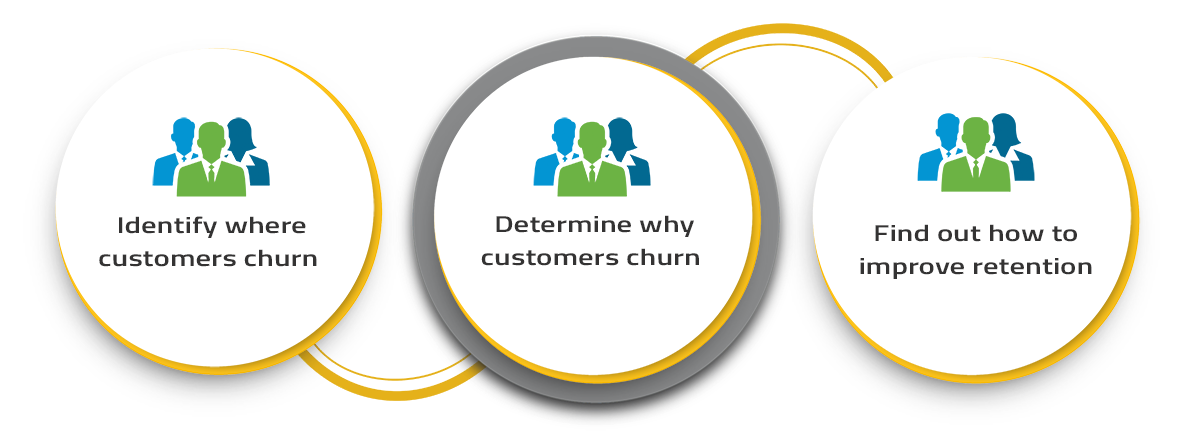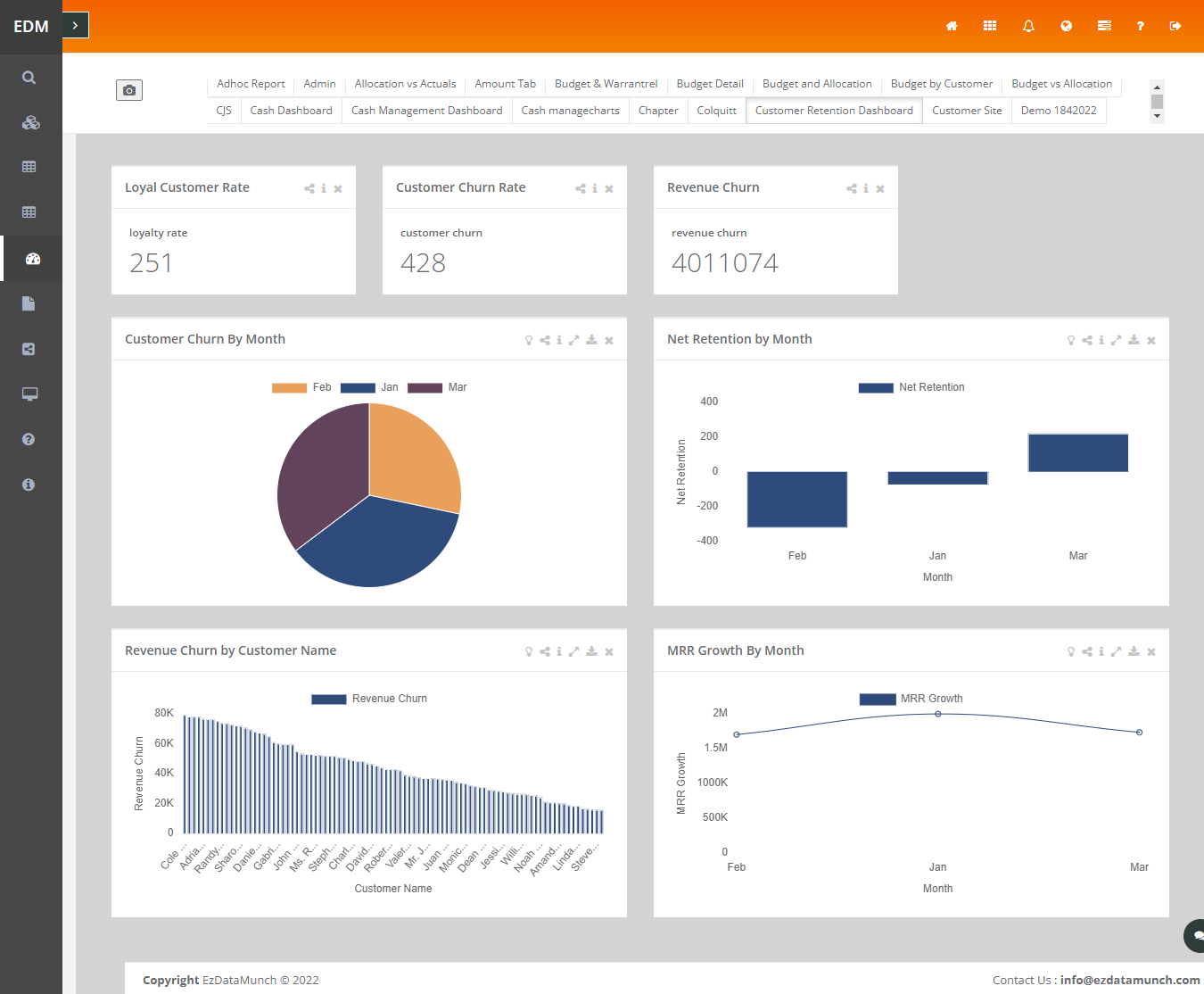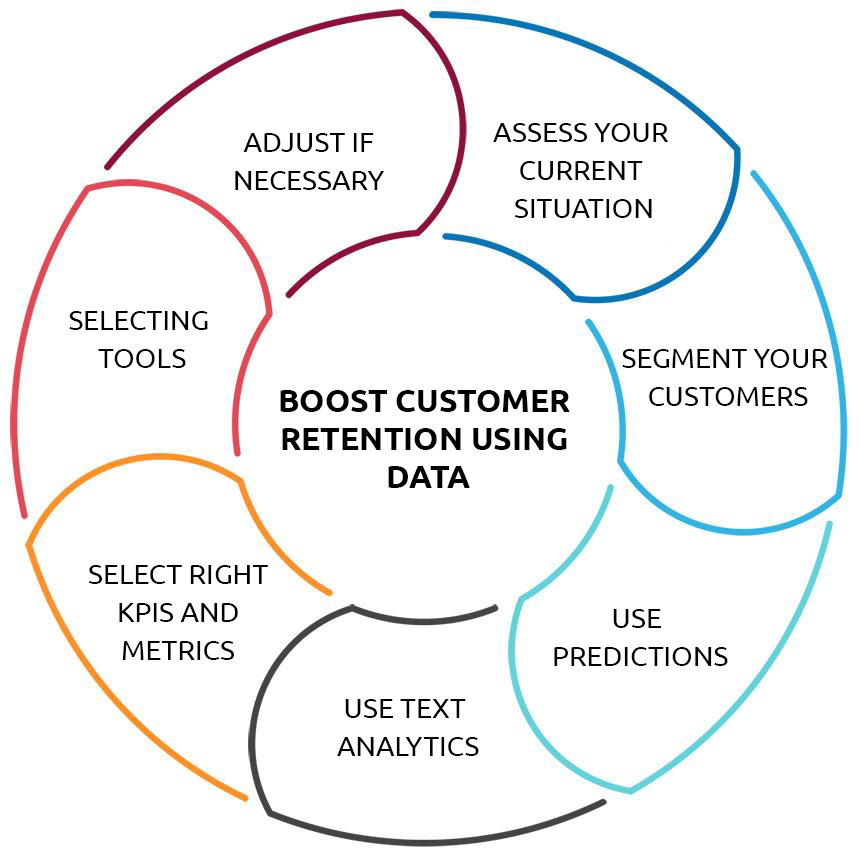Customer retention has become a critical aspect of business operations in almost every industry. As the cost of acquiring new customers continues to rise, businesses must find effective ways to get their existing customers to return again and again.
Great customer service can go a long way toward retaining customers, but it’s not enough. You need to implement a strategy that focuses on retaining customers as well as getting them to refer your business to their friends and family.
Let’s take a look at some strategies you can use to increase your customer retention rate and drive up your bottom line.
What is Customer Retention?
A customer retention dashboard is a visual tool to learn customer-focused metrics and understand how and why customers leave your business or churn. Customer-centric metrics such as retention rate, churn rate, MRR growth, number of loyal customers, etc. Some of the notes that help to know that are relevant to your business include:
- Why customers are churning.
- When customers are more likely to leave.
- How churn affects your bottom line.
- How to improve your retention strategies.
Why Do You Need Customer Retention?
Customer retention is an important metric because it measures whether customers continue to use your product or service after they become customers. If you lose a customer, then you’ve lost money. If you retain a customer, then you still have a chance at making money off them.
How Customer Retention Analysis Works
Every product in business has to face churn. This is because sometimes users log in for five minutes or buy the cheapest plan to solve a one-time task, never to return. Yet we aim to increase the number of customers who continue to use your product month after month. The more customers you retain, the more recurring income you can generate.
Before you begin customer retention analyzing, you must first understand what customer success looks like for your users who use your product. A customer who stays with you is happy with your products and services, which increases the likelihood that they will refer more customers to you.
To get a clear picture, you need to find out where, how and why your customers leave. These insights can help you adjust retention strategy and achieve sustainable business growth.

Identify where customers churn
It is this initial step in retention analysis that can help you understand at what point in their journey, your customers are more likely to churn. By studying the fluctuations in your existing customer behavior and retention rate, you can find out which stage of the new user journey is most volatile.
Once you have this information, you can adjust marketing strategy to improve retention efforts in the most vulnerable part of the customer’s lifecycle and increase the number of users who stick with your product. The key to identifying where customers churn is continuous analysis of their behavior, from onboarding, to retention and churn rates into account.
Determine why customers churn
Retention analysis can show you the number of customers that churn and why. By doing this, you can identify the behaviors associated with churning and receive direct feedback.
Finding out when customers leave you can help you identify weaknesses in your strategy. Meanwhile, feedback provides a direct explanation as to why the customer decides to brainstorm. By adjusting your business strategy to fight common causes of churn, you can increase retention rates quickly and efficiently.
Find out how to improve retention
A smart customer retention analysis allows you to understand what you did wrong. Knowing where and why customers churn can help you identify the weak parts of your marketing and retention strategies and fix them in a timely manner.
Many companies make the mistake of employing them without first analyzing the situation. With retention analysis results, you can pinpoint strategies that work specifically for your business.
What are Customer Retention Metrics?
Customer retention metrics are factors, or variables, used to measure the likelihood of retaining and attracting customers to your business. These units of measurement are used in various formulas designed to determine the performance of business operations over a given period.
Choose customer retention KPIs
To move retention analysis in the right direction, you need to identify the metrics that you associate with engagement. Some common key KPIs are:
- Customer churn rate: customers that leave after subscribing.
- Customer lifetime value: the total amount the customer is expected to spend on your product.
- Customer engagement score: evaluates customer engagement and free trial prospects.
- Net Promoter Score: how many customers recommend your product to others.
- MRR churn rate: lost revenue due to lost customers.
Customer Retention Dashboard Example
Create a retention dashboard to track key customer success metrics such as retention, churn, cancellation, contraction and expansion. Let’s see what a dashboard looks like for customer retention.

This business dashboard starts with an at-a-glance overview of customer loyalty rate (CLR) that will shows the total loyal customer. Coming next, customer churn rate and revenue churn KPIs will shows total customer churn and the total revenue loss. Moving forward customer churn by a month pie chart showing customer churn according to the month (Jan, Feb, and Mar). The next bar chart shows net retention compared with the month. Below you can see revenue churn from the customer. The next line chart it defining the MRR Growth rate compared with the month.
3 Customer Retention Analytics Best Practices
1. Collect multiple data points
Estimating based on only a portion of the data should be avoided. Use different data points to make predictions and estimates. Data points can be collected manually or automatically. Manual data collection is often more time consuming but can provide more accurate results. Automated data collection is often less expensive but may be less reliable. The important thing is to choose the right option for the specific need.
2. Take advantage of social proof where you can
You can leverage social media for current customers and/or brand advocates in the form of tweets, Facebook posts, Instagram comments, etc. Save whatever positive things people say about your product or service through social media.
3. Turn practical data into concrete action
It is fact that better data means better result. Collect and filter the data as per your industry need and make the analysis. Just by improving your internal data collection, you can often arrive at better result. Data is not static, it’s a continual process of observing, acting and learning.
How to Boost Customer Retention Using Data

Business Intelligence Dashboard is an analytics tool used to visualize Big Data across all industries. These dashboards provide important reporting and metric information and are integral in business performance management.
Now we will walk you through some tips and best practices that you need to follow to boost your retention rates using data. Below we show you how you can achieve this.
1. Assess your current situation
It is always necessary to know your current situation before any planning. To get started you need to know the real details of your current data to calculate your customer retention and churn rate. This will serve as a guide to understand where you need to improve and what steps you are going to take to get where you want to be.
2. Segment your customers
The business fails to target the right customer because they may be using the manual method or selecting an irrelevant customer. Data is huge and can give you the path to success.
But if you are not targeting the right customer, there is a high chance that your churn rates will be high. To avoid this, make a clear segmentation of your customer base which may be based on annual expenses, job title, level of education or any other characteristics that are valuable to your business.
3. Use predictions
In the old days it used to be a manual process for making predictions which could lead to getting unfair or wrong information from the data. But predictive analytics has given a whole new way of analytics for business. With predictive analytics the user can identify trends and patterns and has the ability to make predictions about what might happen in the future. It does this by analyzing current and historical data and by tracing relationships within the information.
4. Use text analytics
Another way to collect valuable insights from your customers is to use text analytics. Essentially, this technology uses machine learning and natural language processing to analyze any type of textual data and understand the sentiment behind it. Analyzing survey responses, product reviews and social media comments can be especially useful.
5. Select right KPIs and metrics
Selecting a KPI can be an important step in customer retention analysis. Now a days all the business users have a clear vision of what the customer expects from you and what they are looking for in your product. To do this, it is essential to select a KPI that will act as a performance tracker and tell you how far you are from reaching your goals.
6. Selecting Tools
It may be easy for a small business to work on customer retention analysis but it will not be an easy task to do the analysis for huge eCommerce stores like Amazon, Flipkart etc. Their data can be linked to multiple data sources and controlled by multiple departments in the organization. For such companies to handle large datasets, a wide range of online data analytics tools are available that can reduce employee workload. We EzInsights provides online analytics tools that can help you merge all your customer retention data sources into one dashboard as well as you can share with any user within or outside the organization.
7. Adjust if necessary
We recommend that you always adjust your strategies according to the current context. Instead, whether you reach your goals or not, we live in a fast-paced world that is constantly changing and if you want to be successful you need to act on the changes as they happen. If you grew your business and began offering new products or services, it is essential to optimize your data to ensure that you are making the most of all your available resources.
Conclusion
In this article we have explained the importance of customer retention analysis dashboard along with some useful retention KPIs and metrics. When you learn to take full advantage of it by tracking customer behavior, delving into key metrics, seeking feedback, you can really find a way to reduce churn rates, increase customer satisfaction, and rev up the revenue graph in no time.
If you too are facing difficulties in reducing the customer churn rate then EzInsights will be happy to assist you. You can sign up for a free trial anytime.

Milan Desai
Chief Technology Officer
Milan Desai has more than 20 years of industry experience in working with clients to solve business problems. Passionate about leveraging technology for improving the quality of life and optimize the use of resources. Currently, working on utilizing data to drive business decision making process and user understanding of key metrics that drive the organization and markets in general. Co-founder of EzDataMunch – the first BI Apps store in the world.

